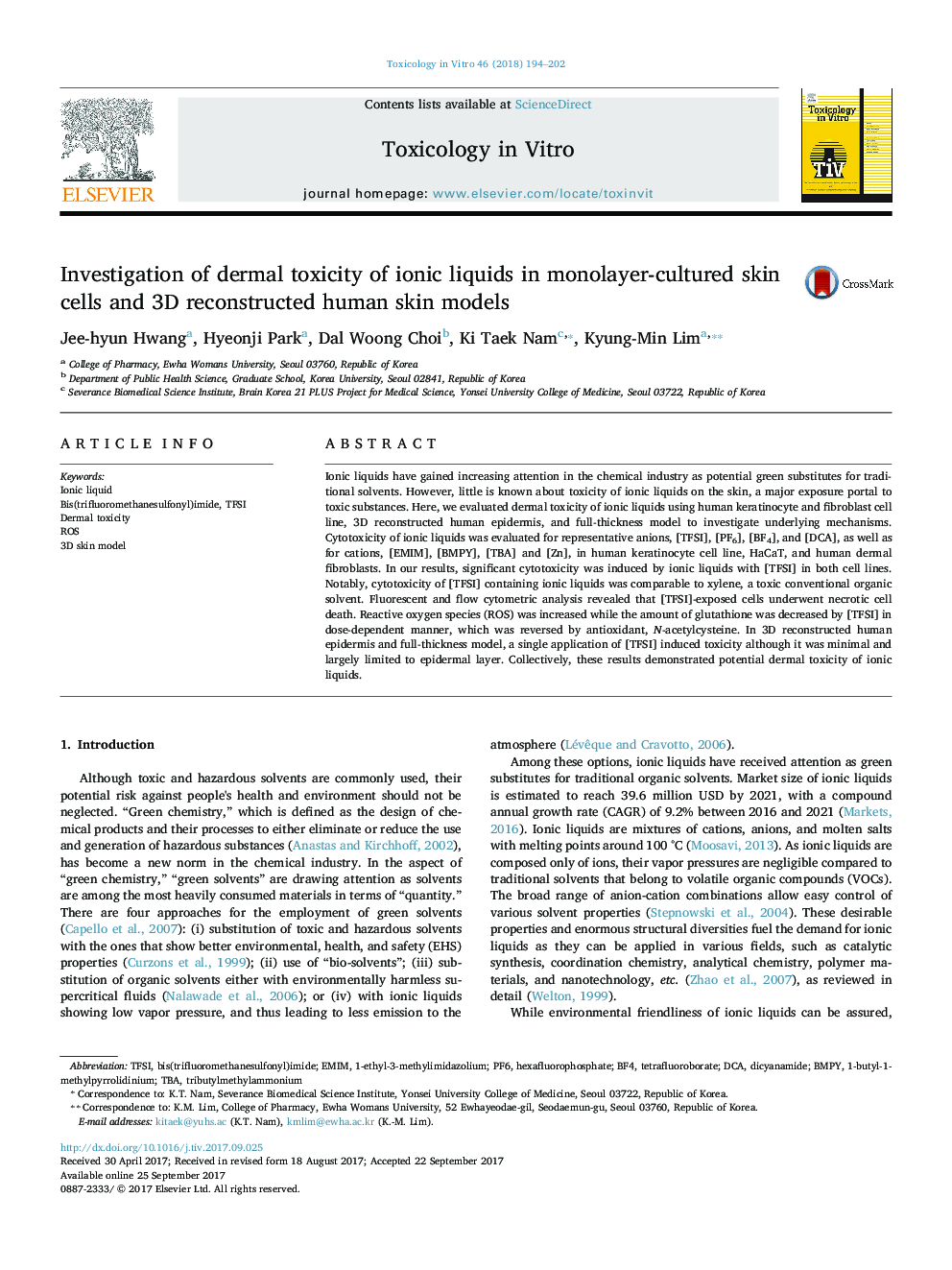| Article ID | Journal | Published Year | Pages | File Type |
|---|---|---|---|---|
| 5562493 | Toxicology in Vitro | 2018 | 9 Pages |
â¢Here, we demonstrate the dermal toxicity of ionic liquids against skin cells and 3D skin model.â¢Of tested ionic liquids, those containing TFSI anion exhibited strongest toxicity.â¢TFSI induced ROS generation and GSH depletion which led to necrotic cell deaths.
Ionic liquids have gained increasing attention in the chemical industry as potential green substitutes for traditional solvents. However, little is known about toxicity of ionic liquids on the skin, a major exposure portal to toxic substances. Here, we evaluated dermal toxicity of ionic liquids using human keratinocyte and fibroblast cell line, 3D reconstructed human epidermis, and full-thickness model to investigate underlying mechanisms. Cytotoxicity of ionic liquids was evaluated for representative anions, [TFSI], [PF6], [BF4], and [DCA], as well as for cations, [EMIM], [BMPY], [TBA] and [Zn], in human keratinocyte cell line, HaCaT, and human dermal fibroblasts. In our results, significant cytotoxicity was induced by ionic liquids with [TFSI] in both cell lines. Notably, cytotoxicity of [TFSI] containing ionic liquids was comparable to xylene, a toxic conventional organic solvent. Fluorescent and flow cytometric analysis revealed that [TFSI]-exposed cells underwent necrotic cell death. Reactive oxygen species (ROS) was increased while the amount of glutathione was decreased by [TFSI] in dose-dependent manner, which was reversed by antioxidant, N-acetylcysteine. In 3D reconstructed human epidermis and full-thickness model, a single application of [TFSI] induced toxicity although it was minimal and largely limited to epidermal layer. Collectively, these results demonstrated potential dermal toxicity of ionic liquids.
